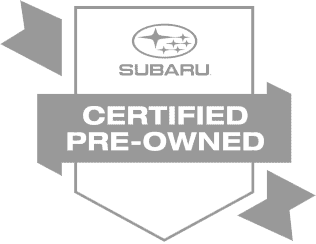INTRODUCTION -> walk around/ Interior -> Driving Impressions

The all-around performance of the WRX is amazing, and all aspects of it: acceleration, handling, braking. Yet the WRX is a complete package. Even the STI is fairly easy to live with for daily driving.
The refinement is apparent from the first turn of the key. Where the old STi had the hollow, reverberating sound one expects inside a stripped-out race car, the current WRX sounds more like the typical family sedan inside, except for the more aggressively tuned exhaust tone. And it's not just a reduction in engine noise. The WRX is fitted with a full undertray that smoothes airflow beneath the car, and we suspect there is more sound insulating material than ever. Road and wind noise have been reduced considerably at all speeds.
Subaru's engines use a horizontally opposed design, meaning the cylinders are laid flat with the pistons on each side moving in opposite directions, similar to the engines in Porsche's sports cars. Like all engine designs, this one has advantages and disadvantages. One of the advantages is compact size, and the prospect of installing the engine low in the car. This gives the WRX excellent handling. Flat-four engines have a distinctive, loping vibration pattern that can quickly be distinguished by motorheads, though like all the vibrations in the current WRX, it's more muted than ever.
The 2.5-liter four-cylinder in the WRX is rated at 265 horsepower and 244 pound-feet of torque. The STi bumps engine output to 305 horsepower and 290 pound-feet. In both cases, it's a lot of power for the engine's size. As significantly, the power curve is broad.
Step on the gas and the WRX just goes, noticeably more quickly than the vast majority of cars in its size or price range, with a swoosh from the turbocharged engine that makes a viscerally satisfying experience. Yet power delivery is more linear than ever, so you don't have to get the engine screaming at 6000 rpm to feel the pull. The WRX will jump as readily if the engine is humming at 2500 rpm when the driver steps on it.
The weak link in this gas-and-go process might be the gear-change for the five-speed manual transmission. The shifter has nice weight and resistance, with reasonably short transfer between gears slots, but the movement is more stretchy than we might like in true high-performance car. Nonetheless, the driver adjusts quickly, and working the gears in the WRX is a very pleasant experience. Starts are aided by Subaru's Hill-Holder feature, which keeps the car from rolling backward as the operator releases the clutch pedal on an incline.
Moreover, the shifter action is something that can be addressed with some of the many port-installed performance options offered by Subaru. One of our test cars had several, including a short-throw shift linkage for the standard WRX five-speed. It gave the car shift feel like a true sports car. In general, the performance upgrades will be appreciated most by sport-compact enthusiasts who consider the WRX the stuff of legend.
The STI is really quick: Ford Mustang GT and Aston Martin V8 Vantage quick, or 0-60 mph in about five seconds flat, with an engine about half the size. Yet even more than in the standard WRX, the STi's refinement is apparent. The power comes smoothly and more evenly than ever before.
The STI's relative civility is apparent in all its dynamic characteristics. Its suspension tuning, or the mix of overall ride comfort, sharp handling and pavement-sticking grip, is one of the highlights. Steering in both the standard WRX and STI is lighter than we'd expect in most performance-tuned cars. But it's also fairly quick, so the car turns a lot with small movements on the wheel, and it's accurate. With a little familiarity, the typical driver will have no trouble directing these cars in very precise fashion.
With introduction of its Impreza 2.5GT model, Subaru has made the suspension on the standard WRX stiffer. Still, even the ultra-performance STI is softer than that of the previous-generation (pre-2008) version, missing the cruder, teeth-chattering shocks of the original. We'll call the suspension movement controlled compliance, with enough give to be comfortable on all but the Midwest's worst roads, much like the typical European sports sedan. The STI suspension dampens body lean and fore-aft bobbing firmly, yet it allows the car to settle smoothly after big bumps, protecting those inside from big jolts or repeating, annoying up-down motions. And it still offers everything the driver needs to evaluate what's happening under the seat or to build confidence in the car's behavior.
At its handling limits, the STI has a slight inclination to understeer, or to generate the feeling that its front wheels are pushing off the road. Yet that tendency is less than in the typical front-drive car, and the all-wheel-drive system allows the driver to get the front end to tuck into a curve by adding a little more gas. The STI stays planted under rough, abrupt or heavy-handed inputs on its controls. Whether braking hard into a curve, or panic-braking with a sudden twist of the steering to avoid an accident, the anti-skid electronics work to keep the car's weight balanced and the tires on that fine line between maximum grip and skid. The STI helps take care of the beginner at a WRX club track day without strangling the joy out for skilled drivers, and it allows exceptionally skilled drivers to turn all the electronic aids off. It's a great setup.
Full-time all-wheel drive in the WRX is pitched primarily as a performance feature, and it's exactly that. Yet it can also be considered a safety feature, helping keep the car balanced steady and true in a driving rain, for example. The standard performance tires aren't much good for cold, slushy conditions, but with winter tires the WRX is hard to beat in winter's worst. Enthusiasts living in the Snow Belt might want two sets of wheels and tires.
Overall, the mechanical and electronic systems are refined, and more than ever. A single management program controls the electronic throttle, the all-wheel-drive, and the Vehicle Dynamics Control. Even the antilock brakes are integrated. That allows a host of possibilities that can enhance safety and improve handling and overall performance. The standard WRX takes care of just about everything for the driver, leaving the choices to the computer chip. The STI, on the other hand, lets the driver sort through a bunch of options using a series of buttons on the center console.
One STi feature, called SI-Drive, allows a choice of three maps for the electronic throttle, ranging from commute grade to extra aggressive. This allows the driver to control how much the engine accelerates with a given movement of the gas pedal: smooth, mild response to big dips on the pedal, or major acceleration with small dips. The VDC also offers choices: Standard, Off, and Performance, which allows enough wheel slip to slide the car but still tries to gather things up if it gets too sloppy. A manual adjustment for the center differential controls how much of the power is sent to the front or rear wheels, as it is in a real World Rally Championship car. Between the various throttle maps, stability and differential settings, there are almost enough permutations to confuse a racecar engineer.
The leave-it-to-the-computer settings in the WRX will be fine for the majority of drivers, but we suppose those paying an extra $10,000 for the STi might expect some tangible features to impress their friends. In the right conditions, driving enthusiasts will have fun playing with the various settings, and those stressed out or confused by the adjustments can go with the default, automatic settings in the STI.
The brakes on these cars are outstanding. On both the WRX and STI, the rotors are larger than those on the typical small car, but especially so on the STI. Its brake hardware is supplied by Brembo, which also makes the brakes for Ferrari and other ultra-high performance car builders. The ABS on these cars is among the most sophisticated available. It uses various sensors to control the braking force at each rear wheel independently, which in turn can help keep the car's rear end from sliding around while braking aggressively in a curve.
Make an Inquiry
* Indicates a required field
Hours
- Monday 9:00 AM - 7:00 PM
- Tuesday 9:00 AM - 7:00 PM
- Wednesday 9:00 AM - 7:00 PM
- Thursday 9:00 AM - 7:00 PM
- Friday 9:00 AM - 7:00 PM
- Saturday 9:00 AM - 6:00 PM
- Sunday Closed







